How to live a simple life in a tiny house for under 10K: Welcome to the world of minimalist living, where less is more and simplicity is key. Have you ever dreamt of living in a cozy and comfortable space that is both affordable and sustainable?
If so, then you might want to consider a tiny house. Don’t let the small size fool you; these tiny homes are a growing trend in the world of real estate and offer a unique and exciting way of living.
And the best part? You can do it all for under $10,000! Living in a tiny house is not just about downsizing your living space; it’s about downsizing your life, simplifying your possessions, and maximizing your freedom.
With a little creativity and a lot of elbow grease, you can build your dream tiny home on a budget that won’t break the bank.
In this blog post, we will explore how to live a simple life in a tiny house for under $10,000, providing you with tips, tricks, and practical advice on how to create your very own tiny home.
So whether you’re looking for a weekend getaway or a full-time residence, get ready to be inspired and learn how to live the life you’ve always dreamed of—in a tiny house!
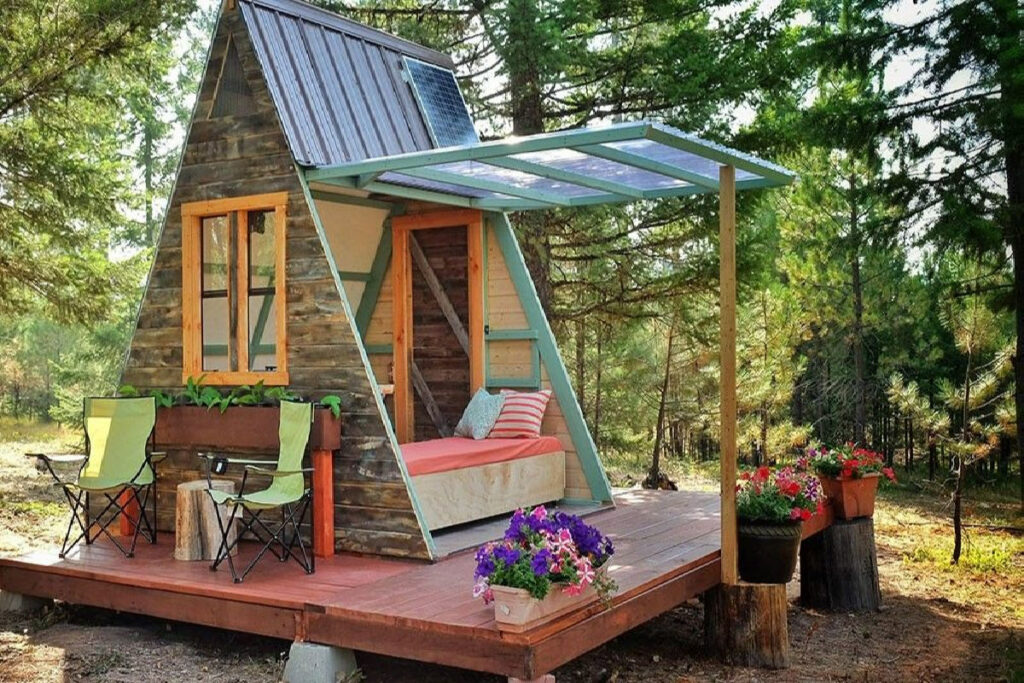
Benefits of living in a tiny house
Living in a tiny house has several benefits, including lower living expenses, reduced environmental impact, and increased freedom and mobility.
With a smaller space to maintain and fewer possessions to manage, you’ll have more time and money to focus on experiences and relationships that matter most to you.
Living in a tiny house can offer numerous benefits that go beyond simply saving money on housing. One of the primary advantages of tiny living is the ability to downsize and simplify your life.
Which can reduce stress and allow you to focus on what truly matters. Additionally, tiny houses are often built with sustainability in mind. Using eco-friendly materials and energy-efficient appliances that can save you money on utilities in the long run.
Another key benefit of tiny house living is the flexibility it provides. Since these homes are often mobile, you can move your tiny house to a new location whenever you want.
Whether it’s to travel the country or simply to find a new place to call home. This level of freedom and independence is rare in traditional housing arrangements.
Living in a tiny house can also promote a sense of community, as many tiny house enthusiasts gather at events and connect with others who share their lifestyle.
Furthermore, since tiny houses are often built with multifunctional spaces in mind, they can be great for hosting guests and entertaining, even with limited square footage.
Overall, the benefits of living in a tiny house are numerous and varied, from increased sustainability to a more minimalistic and intentional way of life.
If you’re looking for a way to simplify your living situation and embrace a more mindful lifestyle, tiny house living may be just what you need.
Also see: How Much Do Tiny Homes Weigh
Top pick
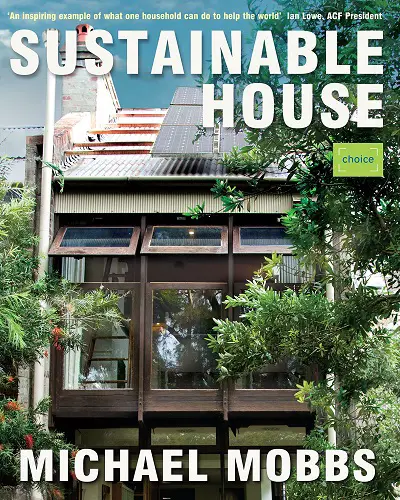
Editor’s choice

Best value

Cost advantages of living in a tiny house
One of the most significant advantages of tiny house living is the lower cost of living. Building a tiny house can cost as little as $10,000, compared to the average cost of a traditional home, which is over $300,000.
Additionally, monthly utility bills and property taxes are significantly reduced, further lowering living expenses. Living in a tiny house comes with a plethora of benefits, one of which is cost advantages.
The initial cost of building a tiny house is significantly lower than that of a traditional home. Additionally, the reduced size means lower utility bills and maintenance costs.
For instance, heating, cooling, and lighting a smaller space requires less energy, leading to lower utility bills. Furthermore, the maintenance costs are lower because there is less space to clean and maintain.
Another cost advantage of living in a tiny house is the ability to live debt-free. With a smaller mortgage or no mortgage at all, tiny house owners can allocate their finances towards other things like travel, hobbies, or savings.
Moreover, tiny house owners can live sustainably and reduce their ecological footprint, leading to a healthier planet and healthier bank accounts.
Overall, the cost advantages of living in a tiny house are numerous and can provide individuals with a simpler, more cost-effective, and sustainable lifestyle.
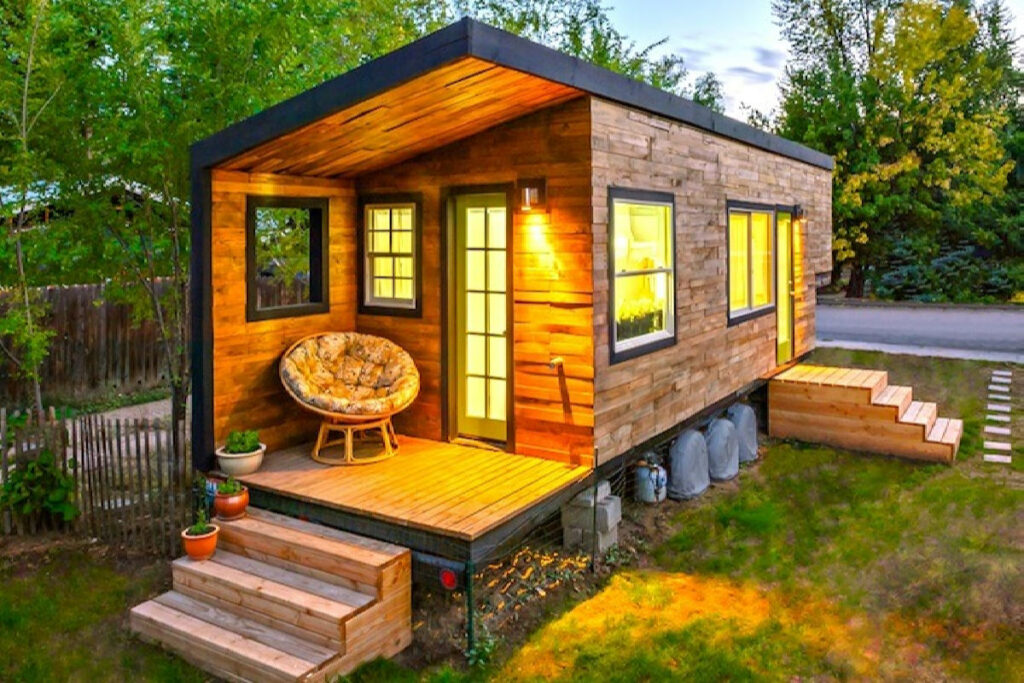
1. Planning
Research and determine the best location for your tiny house
Before building a tiny house, it’s essential to research and determine the best location for your lifestyle.
Factors to consider include zoning laws, available utilities, and access to essential services such as groceries, healthcare, and schools.
Consider zoning laws and building codes
Zoning laws and building codes can vary significantly from one area to another. It’s essential to research and understand these regulations before building a tiny house to ensure that you comply with local laws and requirements.
Decide on the size of your tiny house
The size of your tiny house will depend on your needs and lifestyle. Consider your current living space and what items you use daily. This will help you determine how much space you need for your tiny house.
Develop a budget plan
Building a tiny house on a tight budget requires careful planning and research. Make a list of all the expenses involved in building and living in a tiny house.
This will help you create a realistic budget plan and ensure that you stay within your budget.
Top pick

Editor’s choice
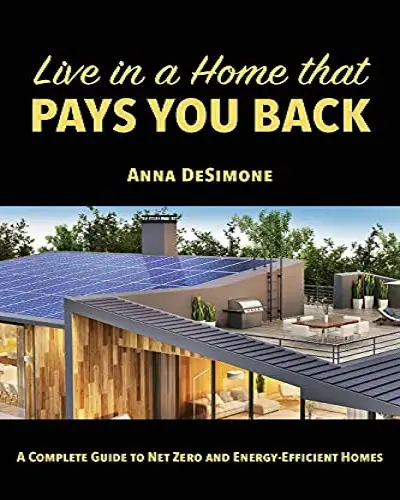
Best value

2. Design
Determine your design style
Tiny houses come in a variety of designs, from modern and minimalistic to rustic and cozy. Choose a design style that reflects your personality and preferences.
Decide on the layout
The layout of your tiny house should be functional and practical. Consider how you’ll use each space and make the most of the available square footage.
Consider storage solutions
Storage is crucial in a tiny house. Consider built-in storage options such as shelves, cabinets, and hidden compartments to maximize space and keep your belongings organized.
Choose eco-friendly materials
Using eco-friendly materials in your tiny house can reduce your environmental impact and lower your energy bills. Consider using materials such as reclaimed wood, recycled steel, and sustainable insulation.
Also see: Tiny Homes You Can Pull With A Truck
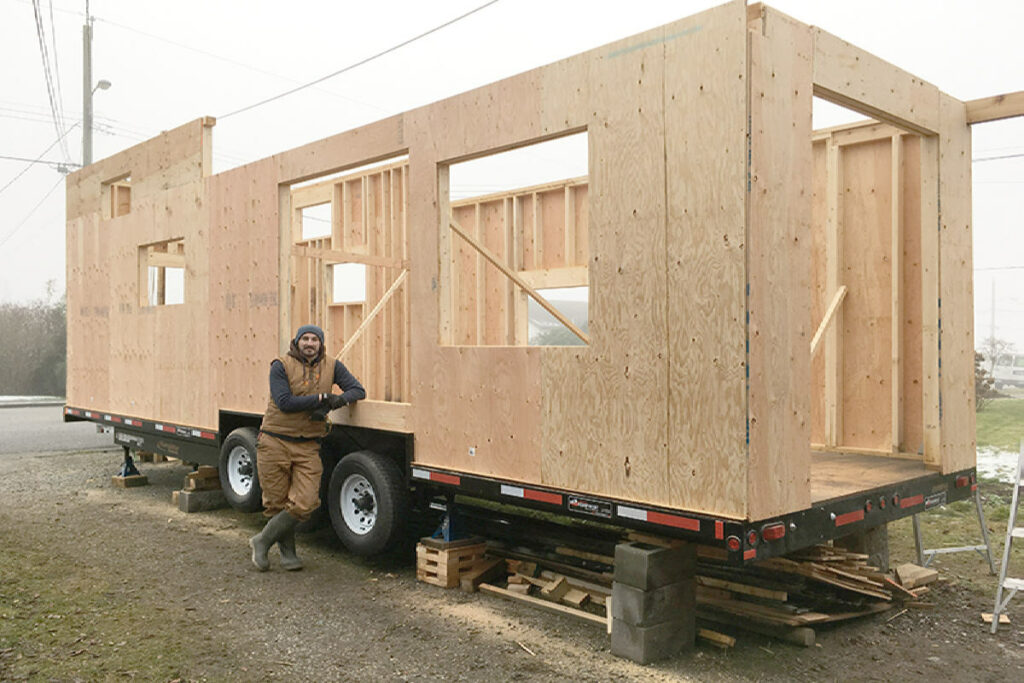
3. Construction
Building options for a tiny house
There are several options for building a tiny house, including building it yourself or hiring a professional builder. Each option has its advantages and disadvantages, and you should choose the one that suits your skills, time, and budget.
Tools required for construction
Building a tiny house requires specific tools, such as a circular saw, drill, and framing hammer. Research and invest in quality tools that will last longer and ensure a smoother building process.
Safety precautions
Building a tiny house can be dangerous, so it’s essential to take safety precautions seriously. Wear protective gear such as gloves and goggles and follow all building codes and regulations.
Tips for DIY construction
If you’re building your tiny house yourself, start with a small project, such as a furniture piece, to gain experience and confidence. It’s also helpful to join online communities and forums dedicated to tiny house construction to gain insights and tips from experienced builders.
4. Utilities
Electricity options for a tiny house
There are several options for electricity in a tiny house, including solar panels, wind turbines, and generators. Research and choose the option that best suits your needs and budget.
Plumbing options for a tiny house
Plumbing in a tiny house can be challenging but not impossible. Consider composting toilets, gray water systems, and water filtration systems to reduce water usage and minimize waste.
Heating and cooling solutions
Heating and cooling a tiny house require energy-efficient solutions such as mini-split systems, propane heaters, and wood-burning stoves. Consider the climate in your location when choosing a heating and cooling system.
Water storage options
Water storage in a tiny house requires careful planning and consideration. Consider options such as rainwater harvesting, water filtration systems, and water tanks to ensure that you have enough water for your needs.
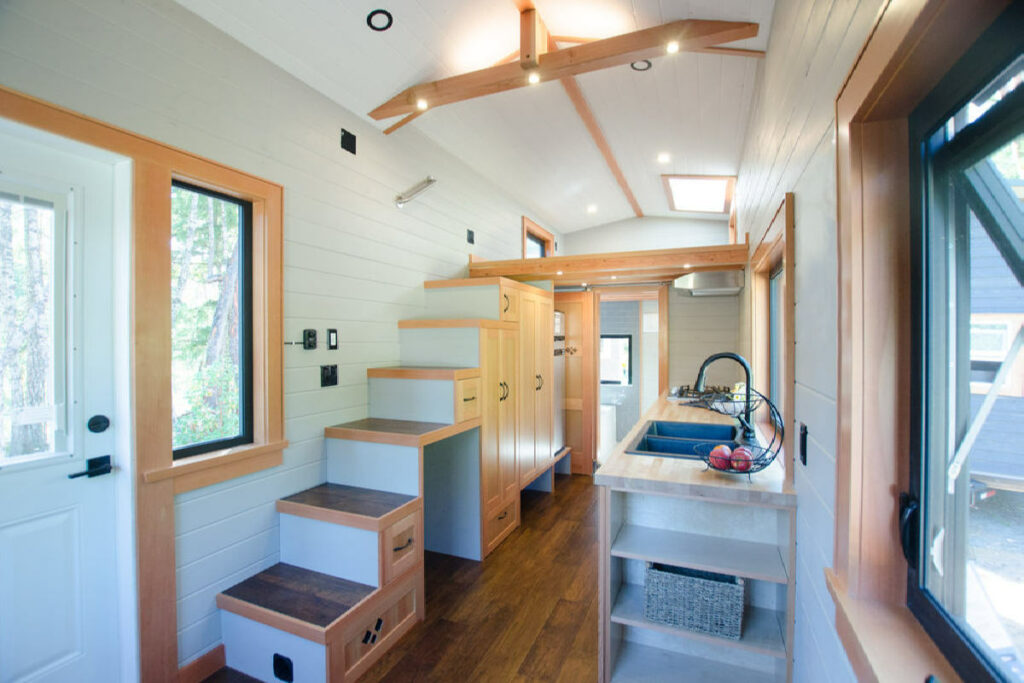
5. Interior Design
Decorating a tiny house requires creativity and ingenuity. Choose a color scheme that reflects your personality and preferences, and incorporate natural elements such as plants and wood accents.
Space-saving furniture ideas
Maximize your living space by choosing space-saving furniture such as foldable tables, wall-mounted desks, and storage ottomans.
Maximizing storage in a tiny house
Maximizing storage in a tiny house requires creativity and resourcefulness. Consider built-in storage options such as under-bed storage, overhead cabinets, and hidden compartments.
Creating a cozy and comfortable atmosphere
Creating a cozy and comfortable atmosphere in a tiny house requires attention to detail. Choose soft lighting, comfortable seating, and cozy blankets to create a warm and inviting space.
6. Outdoor Space
Outdoor living space is crucial in a tiny house. It provides an extension of your living space and a connection to nature.
Designing a functional outdoor area
Designing a functional outdoor area requires careful planning and consideration. Choose outdoor furniture that is comfortable and durable and incorporate elements such as lighting and plants to create a cozy atmosphere.
Tips for small space gardening
Gardening in a tiny house requires creativity and resourcefulness. Consider vertical gardens, raised garden beds, and container gardening to maximize your outdoor space.
Incorporating sustainability into your outdoor living
Incorporating sustainable practices into your outdoor living can reduce your environmental impact and improve your quality of life.
Consider composting, rainwater harvesting, and using natural materials in your outdoor space.
Also see: Can Tiny Homes Be Built On A Foundation
7. Maintenance
Regular cleaning and upkeep
Maintaining a tiny house requires regular cleaning and upkeep. Develop a cleaning schedule and stick to it to ensure that your tiny house remains clean and organized.
Troubleshooting common issues
Tiny houses come with their own set of unique challenges. Research and prepare for common issues such as plumbing and electrical problems to ensure that you can address them quickly and effectively.
Winterizing your tiny house
Winterizing your tiny house is crucial to ensure that it stays warm and comfortable during the colder months. Consider insulating your walls, windows, and doors and investing in a reliable heating system.
Keeping your tiny house safe and secure
Keeping your tiny house safe and secure requires taking necessary precautions such as installing security cameras and alarms, and using quality locks and bolts.
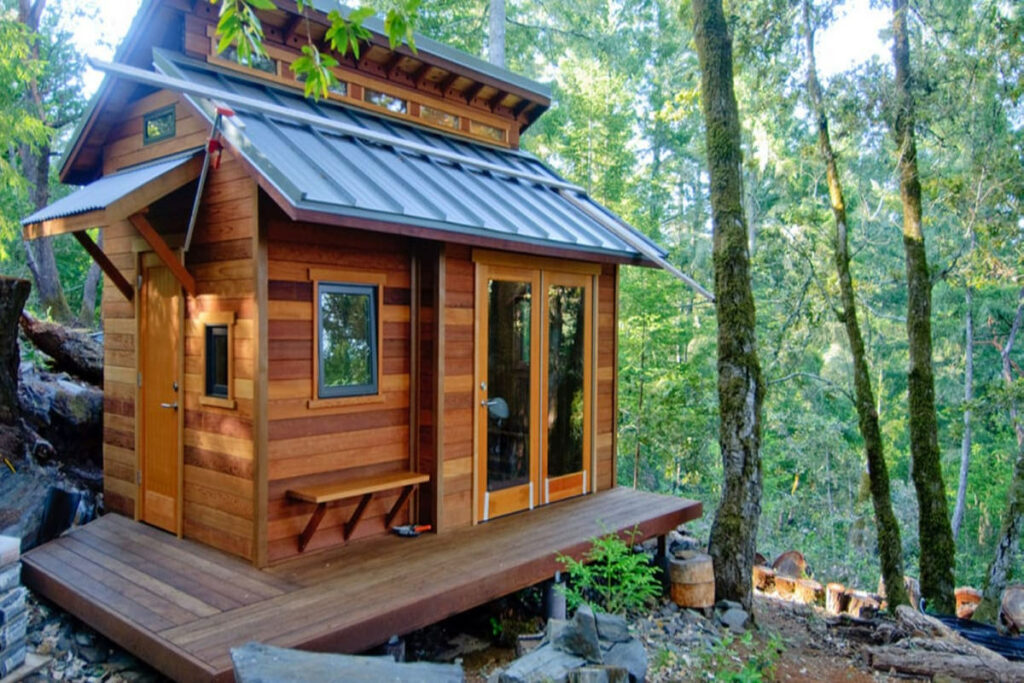
8. Lifestyle
Simplifying your life in a tiny house
Living in a tiny house requires simplifying your life and letting go of unnecessary possessions. Focus on experiences and relationships that matter most to you, and let go of material possessions that don’t bring you joy.
Embracing minimalism
Embracing minimalism is a key component of tiny house living. Focus on owning only what you need and cherish, and letting go of material possessions that no longer serve a purpose.
Prioritizing experiences over possessions
Living in a tiny house allows you to prioritize experiences over possessions. Invest your time and resources in experiences that bring you joy and fulfillment, such as travel, hobbies, and spending time with loved ones.
Creating a sense of community
Living in a tiny house can provide a sense of community and connection. Consider joining tiny house communities and attending events to meet like-minded individuals and build relationships.

FAQ
1. What are the benefits of living in a tiny house?
Lower cost, environmental friendliness, mobility, less clutter, and simplified living are benefits of tiny homes.
2. How can I build a tiny house for under 10k?
Using recycled materials, DIY, and keeping the design simple can help build a tiny house under $10k.
3. What are the essentials for living a simple life in a tiny house?
Minimal possessions, multifunctional furniture, good organization, and efficient use of space are essential in tiny living.
4. What are some tips for making the most of a small living space?
Maximize vertical space, use multi-functional furniture, declutter regularly, and create zones to make the most of small living spaces.
5. What are some common challenges of living in a tiny house?
Limited space, zoning laws, storage, privacy, and social stigma are common challenges of living in tiny homes.
Conclusion
Living in a tiny house can be a rewarding and fulfilling experience. With careful planning, thoughtful design, and sustainable practices, you can live a simple life in a tiny house for under $10,000.
Embrace minimalism, prioritize experiences over possessions, and create a sense of community to enhance your quality of life. With these tips, you can start your journey towards a simpler and more intentional lifestyle in a tiny house.
Also see: How Much Is A Tiny House In Virginia

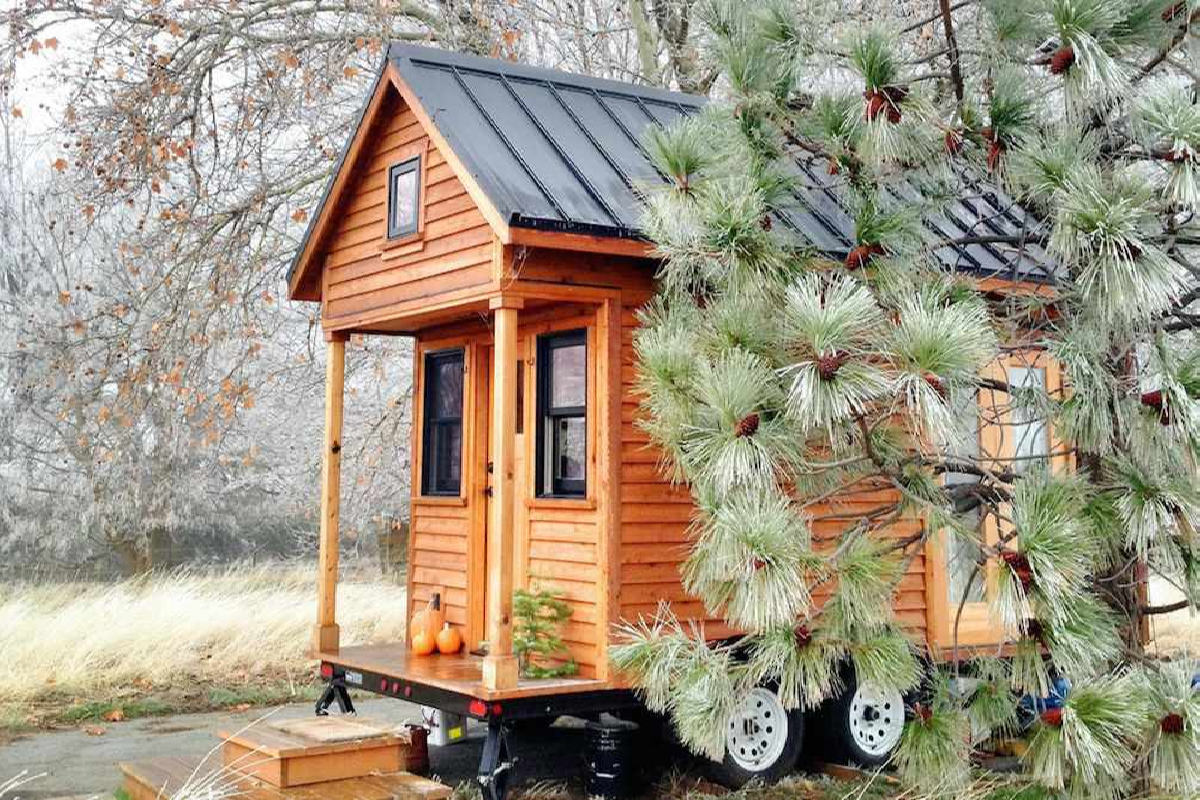
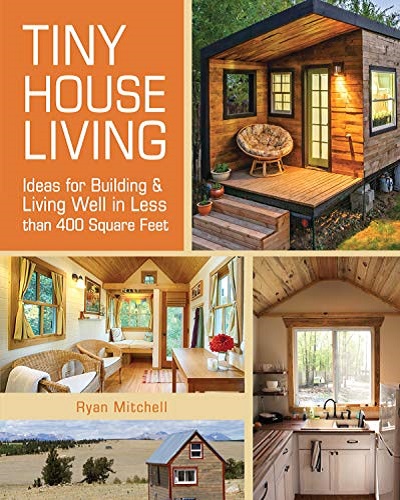
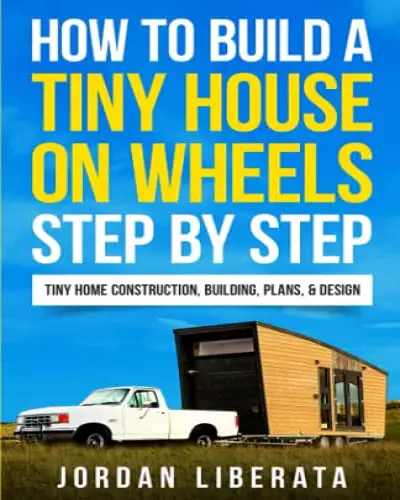
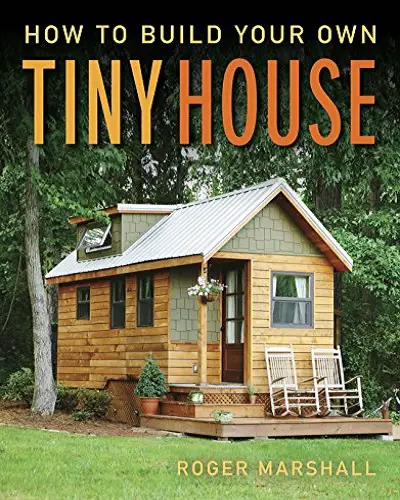
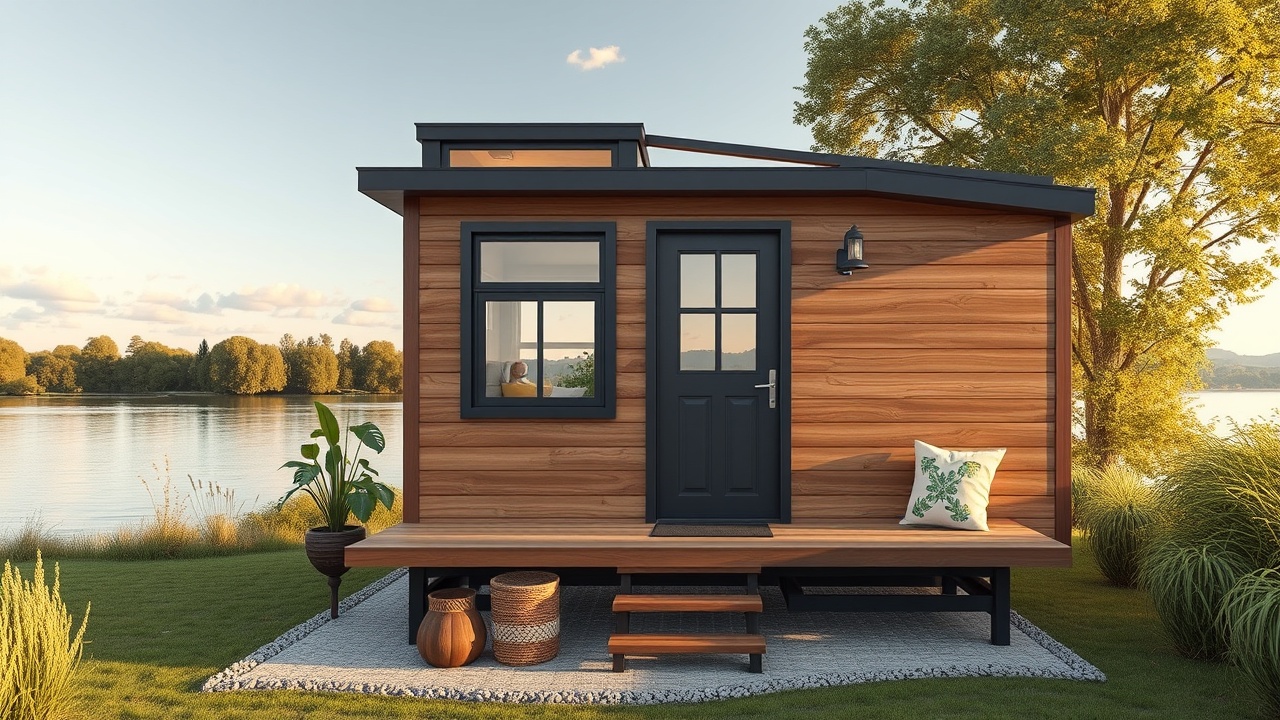
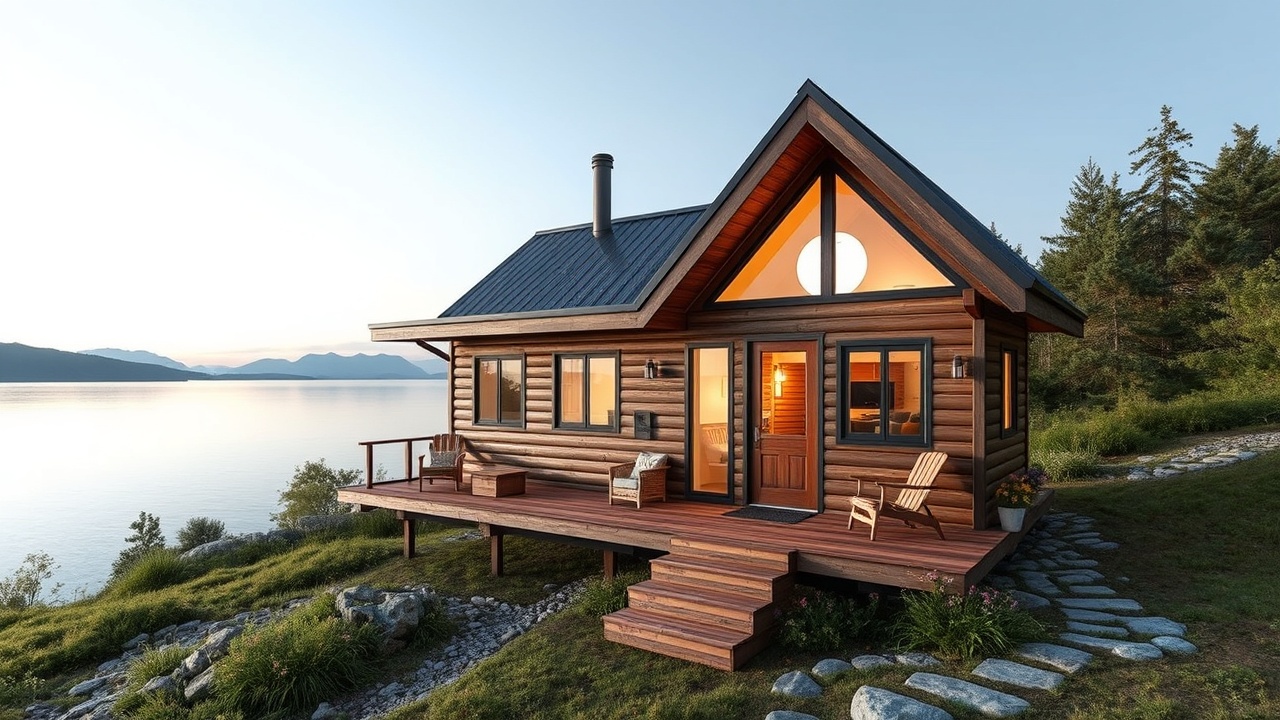
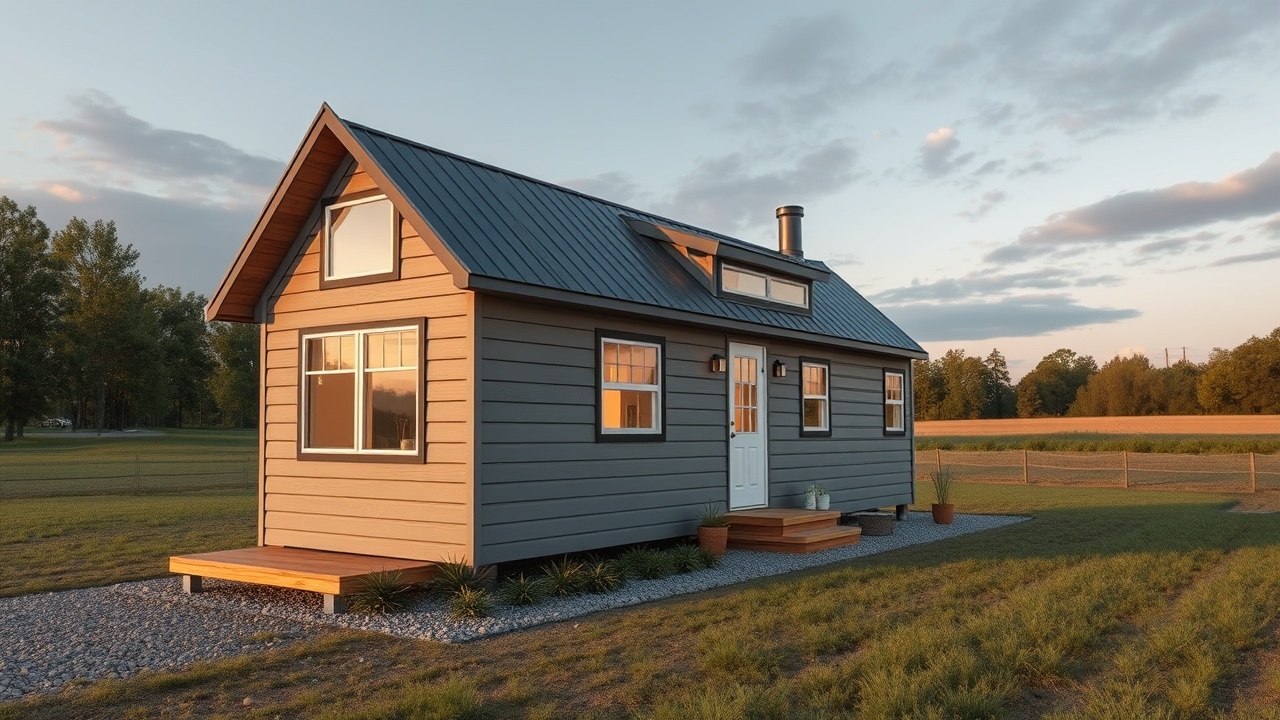
Leave a Reply